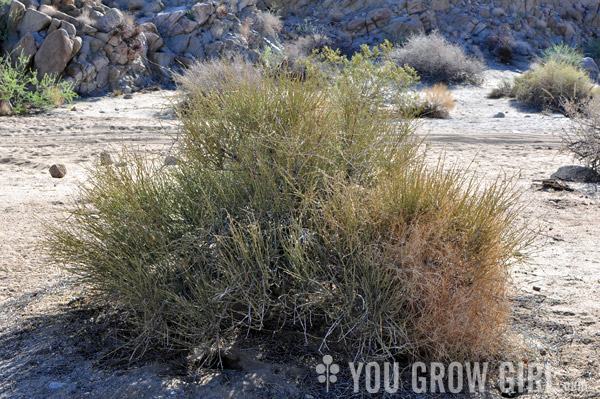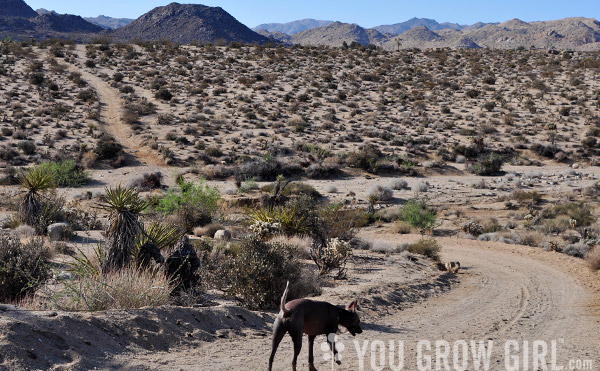
Mention of our mid-June desert road trip on Instagram this morning has compelled me to share a little nugget of knowledge that I gleaned on the trip.
The plant in this photo is Ephedra (I don’t know which species as there are several), commonly known as Mormon tea. Those of you who are not from the Southwest may look at this photo of a leafless, brittle shrub and see a broom plant (Genista), which is how I identified it on first sight on a morning hike through Joshua Tree park until our guide, JayBe corrected me.
Incidentally, we stayed in JayBe’s guest studio in Joshua Tree. It was highly affordable, comfortable, and had immediate access to fantastic hiking trails into the park. There are health food stores nearby so it was easy for us to buy groceries and cook some of our own meals.
He went on to explain how Mormon settlers used the leaves of this bush as a sort-of black tea substitute. People that we met on the trip said that drinking the tea gives you a bit of an energy boost, not unlike caffeine. I brought a little home with me to try, but haven’t done so as of yet. I am quite allergy prone and only try new herbs once I have thoroughly done my homework and am certain that it will be safe. If you’d like to try some yourself, Native Seed/SEARCH in Tucson, Arizona, sells stems of Ephedra americana.
Since the trip I have done some research of my own and according to the books I consulted (listed below), a tea made from the plant is also used medicinally as a kidney flush, decongestant, and for support during allergy season (makes me think I might be just fine with this herb).

This is a second type of Ephedra. As you can see it has a lower, prostrate growth.
The book “Indian Uses of Desert Plants” by James W. Cornett explains that the plant had other edible uses for some local tribes. The roasted seeds were mde into a mush and used to bake a bitter bread, and chewing the stems, “…increased salivation as a temporary relief from thirst.” The book also indicates that Ephedra viridis was used to make a light-tan coloured dye, and I am now curious to know what sort of colour the stems I brought home with me might glean.

The view as we set out on a morning hike, our first day in Joshua Tree. The dog is a sweet Peruvian Inca Orchid dog named Palo that belonged to our guide.
Further Reading:
- Medicinal Plants of the American Southwest
- Los Remedios: Traditional Herbal Remedies of the Southwest
- Plants of the Cahuilla Indians of the Colorado Desert and Surrounding Mountains by Robert James Hepburn
Disclosure: None of the links in this post are paid endorsements. They are companies and services that I have used and recommend personally. However, affiliate links to books on Amazon do glean me a small percentage that is used towards buying books for giveaways and reviews. Any paid endorsements, advertising, or business relationships on this site are always disclosed.